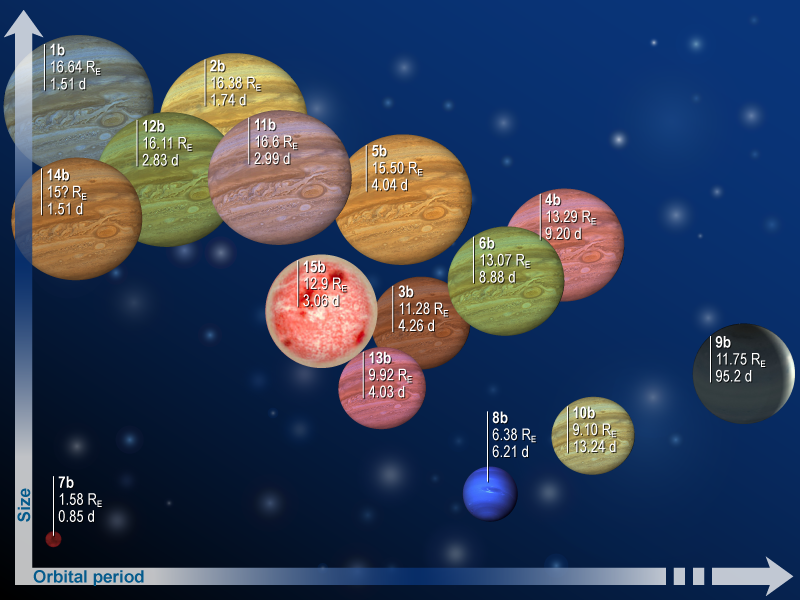14 june 2010
Several thousand light-years

The smallest of CoRoT’s latest finds has been designated CoRoT-8b. “It’s the second smallest planet that CoRoT has discovered after CoRoT-7b, the first super Earth, in 2009,” says Pascal Bordé, an astrophysicist at the IAS space astrophysics institute in Orsay.
Launched in 2006, CNES’s spacecraft is regularly revealing new planets outside our solar system.
“The value of the CoRoT programme lies not so much in the number of planets it has detected, but in their diversity,” he explains.
CoRoT recently discovered 7 new specimens light-years from Earth.

A great technical achievement for the spacecraft operating in Earth orbit at an altitude of 900 km.
CoRoT specializes in observing planetary transits.
“CoRoT surveys about 80,000 stars over a period of 20 to 150 days,” explains Pascal Bordé. “We are looking for what we call transits, a sort of mini-eclipse revealed by a slight dip in the light from a star when a planet passes in front of it.”
This is the only method capable of measuring the size of a newly discovered planet.
With help from ground telescopes

Another of the 7 new prizes from CoRoT’s latest haul is CoRoT-15b. “This is an especially interesting object,” affirms Pascal Bordé. “It’s what we call a brown dwarf, halfway between a planet and a star, with a mean density 7 times that of steel.”
CoRoT-10b has a particularly elongated orbit about its host star, which could mean it experiences temperature swings between 250°C and 600°C in just a few days.
CoRoT-11b is orbiting an extremely fast-rotating star that spins around its axis in 40 hours, compared to 26 days for our Sun.
And lastly, CoRoT-12b, CoRoT-13b and CoRoT-14b are most likely “hot Jupiters”, gas giants 16 times the size of Earth, but with widely varying densities.

But it would be impossible to get an accurate picture of these new worlds without data collected from the ground by the HARPS1 and SOPHIE2 spectrographs, and by the Very Large Telescope at ESO3 in Chile. These data allow scientists to precisely determine the mass and radius of planets found by CoRoT.
To date, 450 exoplanets have been detected by telescopes around the globe. Of these, 80 are transiting their host stars and include the 15 discovered by CoRoT.
CoRoT’s mission was recently extended for a further 3 years, so the space telescope controlled by CNES from the Toulouse Space Centre can look forward to many more discoveries yet.
1 Spectrograph on the 3.60-m telescope at ESO in Chile.
2 Spectrograph on the 1.93-m telescope at the Observatoire de Haute-Provence, France.
3 European Space Observatory.
